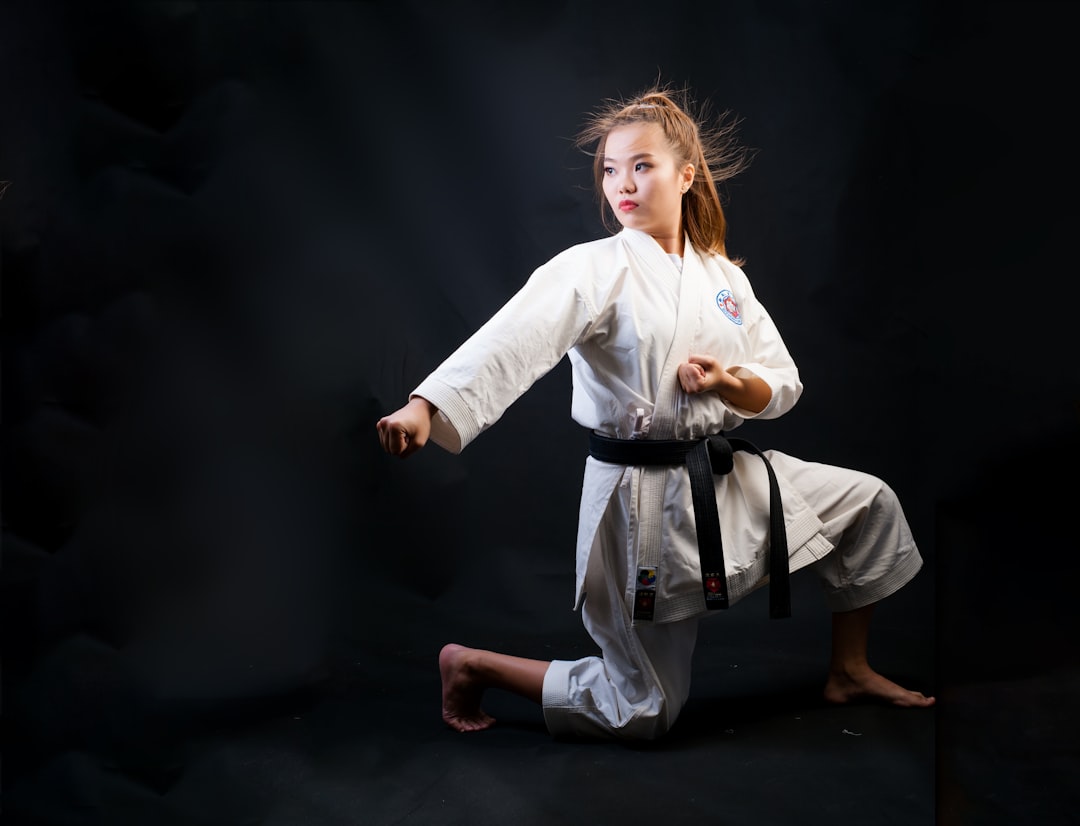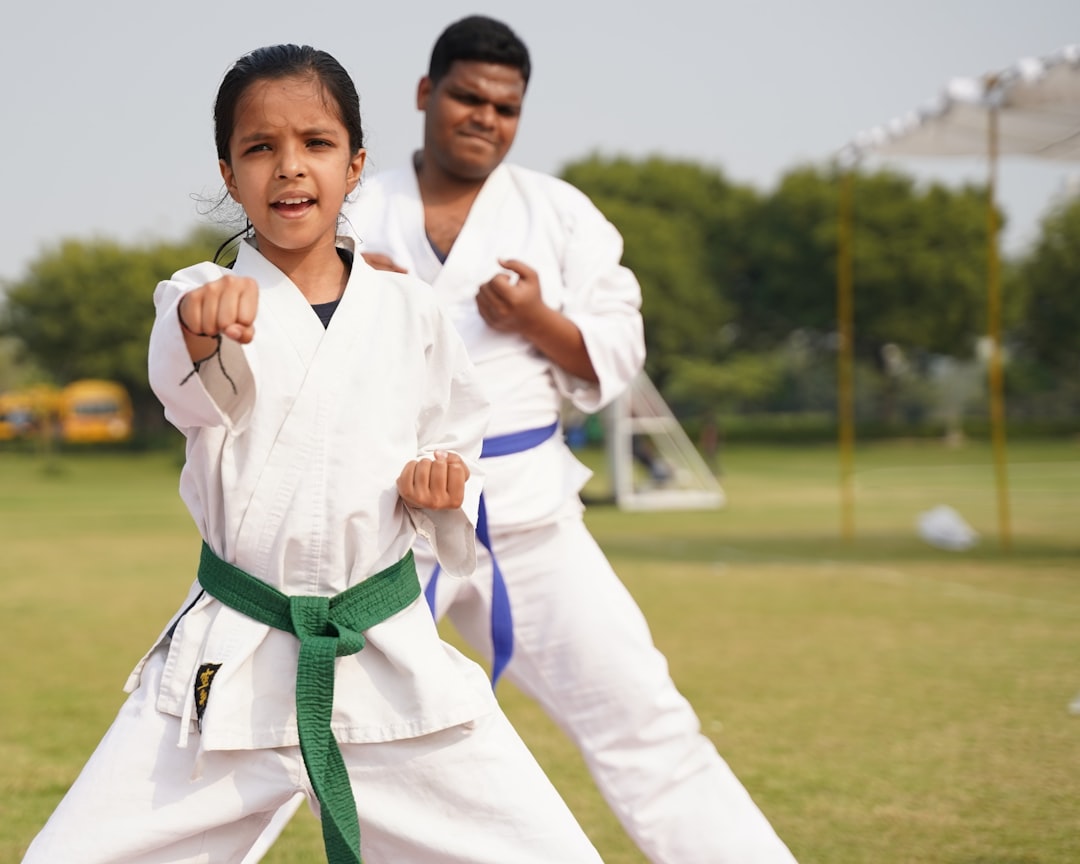The article explores the multifaceted role of the traditional karate suit, known as a gi, which serves both practical and ceremonial purposes in the discipline. The gi consists of a white cotton jacket, secured with a belt denoting rank, and trousers designed for ease of movement. Its color symbolizes purity and equality among practitioners. The discussion emphasizes the importance of selecting a durable and comfortable gi material, often heavyweight cotton or hemp blends, for intensive training sessions. Historically, the karate suit has evolved from everyday clothing to a specialized uniform influenced by judo attire while retaining its traditional Chinese roots. Today's karate suit allows for full range of motion in kata and kumite exercises, maintaining its cultural integrity and functional evolution. When choosing a gi, it's crucial to consider both the historical standards of karate wear and modern design elements that ensure mobility, comfort, and respect for the martial art's traditions. A well-selected gi supports optimal performance in training and competitions, reflecting a practitioner's dedication to the sport and its heritage.
Embark on a journey through the world of Karate, where the garb is as significant as the discipline itself. At the heart of this martial art lies the gi, a traditional uniform that not only unifies practitioners but also pays homage to its rich heritage. This article delves into the essentials of the Karate suit called Gi, tracing its historical evolution and guiding you through the process of selecting the ideal Gi for your practice or competition. Whether you’re a seasoned martial artist or a curious novice, understanding the purpose and composition of a Karate Gi is key to honoring this timeless tradition.
- Understanding the Essentials: The Composition and Purpose of a Karate Suit Called Gi
- Historical Evolution: The Origin and Development of Karate Uniforms Over Time
- Practical Considerations: Choosing the Right Gi for Your Karate Practice or Competition
Understanding the Essentials: The Composition and Purpose of a Karate Suit Called Gi

When engaging in the discipline of karate, practitioners don a specialized garment known as a gi. This traditional outfit is central to the practice, serving both functional and ceremonial purposes. The gi, which can be referred to as a karate suit or karate uniform, is a two-piece garment composed of a jacket and trousers, typically made from cotton or hemp fabric for durability and comfort during the rigorous movements involved in karate training. Is the gi only practical, or does it hold significance beyond its utilitarian use? The answer lies in its design and the respect it commands within the martial arts community.
The jacket of the gi, known as the uwaagi, features a belt, or obi, which is used to secure the garment and also serves as an indicator of the wearer’s rank. The trousers, called nagi, are straight-legged and designed to move freely with the practitioner, allowing for complete range of motion without restriction. The white color of the gi symbolizes purity and neutrality, promoting a sense of equality among all students on the mat. What material constitutes the most durable and comfortable gi for intense training sessions? Typically, a heavyweight cotton or hemp blend is preferred due to its resilience and breathability, which can withstand the demands of karate practice while keeping the wearer cool and collected.
Historical Evolution: The Origin and Development of Karate Uniforms Over Time

Karate suits, often referred to as “gi” or “keikogi,” have a rich history that reflects the evolution of martial arts culture and the integration of traditional attire with practical training needs. Initially, practitioners of karate did not wear specialized uniforms; instead, they trained in regular clothing. However, as karate developed into a more formalized practice, the need for a garment that allowed for full range of motion while also being durable and respectful became apparent.
The modern karate suit is a direct descendant of traditional Japanese judo attire, which itself was adapted from classic Chinese garments. The influence of these martial arts on one another led to the design of a uniform that could be used across different disciplines. Are the current karate suits significantly different from their historical counterparts? Yes, they have evolved to meet the demands of the sport while maintaining a connection to the traditional roots of karate. Today’s karate suit typically consists of a jacket and trousers made of cotton or a similar material, with the jacket reaching just below the waist and the trousers being straight-legged and coming to about mid-calf length. This design allows for ease of movement, making it ideal for the various kata and kumite exercises that karate practitioners perform.
Practical Considerations: Choosing the Right Gi for Your Karate Practice or Competition

When preparing for karate practice or competition, selecting the appropriate karate suit, commonly referred to as a gi, is crucial for both performance and respect for the discipline. The right gi should not only adhere to the traditional standards of karate attire but also offer functionality and comfort during rigorous training sessions or high-intensity competitions. A well-fitted gi allows for ease of movement, enabling practitioners to execute techniques with optimal precision and range of motion. It’s essential to consider the fabric; lightweight, breathable materials are recommended for intense activity, as they help regulate body temperature and reduce discomfort from perspiration. Does the gi comply with the specifications set forth by your karate dojo or organization? Is it made from a durable, yet flexible, material that won’t hinder your movements or cause unnecessary distractions during practice or competition? Ensuring these aspects are addressed will contribute to an unobstructed and effective training experience. A high-quality gi not only supports the practitioner’s performance but also signifies respect for the martial art’s traditions and discipline. The choice of your karate suit, whether it be for daily practice or high-stakes competition, is a reflection of your dedication to the sport and should be made with careful consideration.
In conclusion, the karate suit, commonly referred to as a gi, is a fundamental element in the practice and discipline of karate. Its origins date back to ancient Japan, where it was adapted for martial arts training, reflecting a blend of traditional Japanese attire with functional design elements conducive to movement and durability. Today’s karate gis, while maintaining their historical roots, cater to both the practitioner’s needs in daily training and the competitive demands of tournaments. When selecting a gi for either practice or competition, it is important to consider factors such as fit, material, and durability to ensure optimal performance and respect for the martial art’s traditions. Whether you are new to karate or an experienced practitioner, understanding the significance of your karate suit called gi is key to embracing this rich and impactful discipline.
